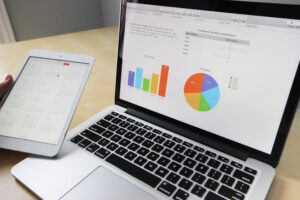Active management means that an investor or a professional money manager is tracking the performance of a portfolio and making buy, sell, and hold decisions about the assets in the portfolio. The goal of any investor is to outperform a benchmark while simultaneously accomplishing several other goals, such as managing risk or adhering to ESG standards. Active managers may differ in how they accomplish some of their goals.
Table of Contents
ToggleActive vs Passive Management
Active managers may use investment analysis, research, forecasts, and quantitative tools to make decisions on which investments to buy and sell. They may also use their own judgment and experience when making these decisions. They might use an algorithmic approach, a purely discretionary one, or something in between.
By contrast, passive investment follows simple rules that try replicate an index or other benchmark. Those who advocate for active management maintain that the best returns are achieved by investing in assets that mirror a particular stock market index. They contend that passive management removes the shortcomings of human biases and that these lead to better performance. However, studies comparing the two approaches have only served to keep this debate alive.
Investors who believe in passive investing do not support the stronger form of the efficient market hypothesis, which argues that it is possible to beat the market over time because all public information has not yet been incorporated into stock prices.
Those who believe in the EMH insist that those who trade stocks day after day, trying to profit from their frequent fluctuations, will likely do worse than those who invest in the components of the major indices that are used to track market performance over time. However, this viewpoint narrows investment goals into one dimension. Active managers would argue that if investors are concerned with more than simply tracking or slightly beating a stock market index, an active investment approach may be better suited for the job.
How Active Managers Measure Success
Active managers measure their success by comparing the performance of their portfolios against an unmanaged index, industry or market sector.
For example, the Russell 1000 Growth Index is used by the Fidelity Blue Chip Growing Fund as its benchmark. During the five years ending June 30, 2020, Fidelity’s stock fund outperformed the S&P 500 by 0.7 percentage points while the Russell 1000 Growth index outperformed the S& P 500 by 1.8 percentage points. Thus, the Fidity fund outperformed its benchmark for that five-year period by 1.46%. Active managers will also assess portfolio risks, along with their success in achieving other portfolio goals. Investors who are approaching retirement age need to be aware of the risks they face when investing in their savings.
Active fund managers can handle risks better than passive ones. An ETF that tracks the performance of a basket of British banks may be required to hold at least a certain number of them. That fund has probably lost a lot of its value since the UK voted to leave the EU in June 2016. A globally managed bank might have reduced its exposure by investing in other countries’ banks.
Active managers can also use various hedging strategies such shorting stocks and using derivatives.




